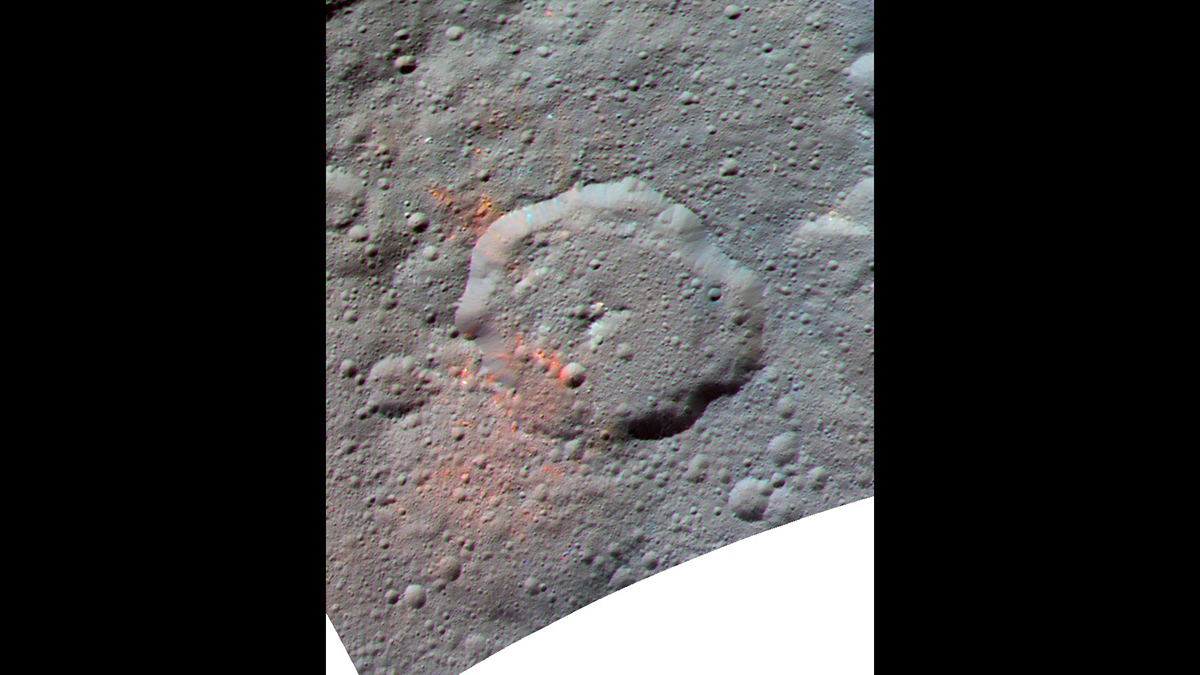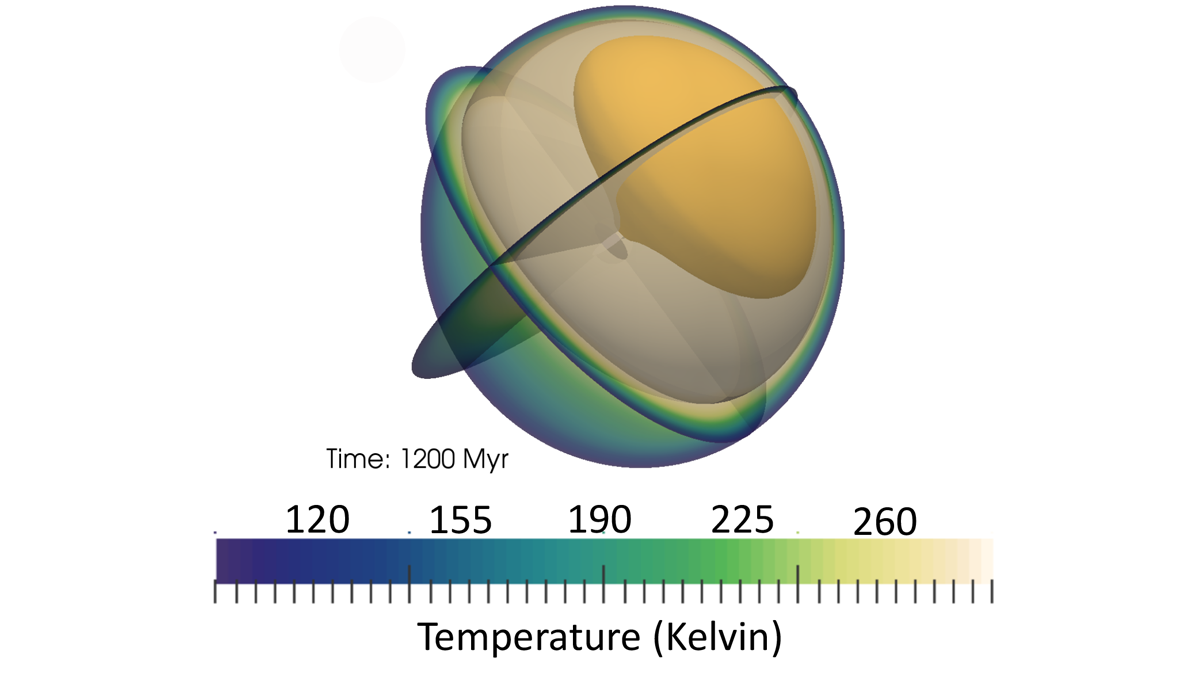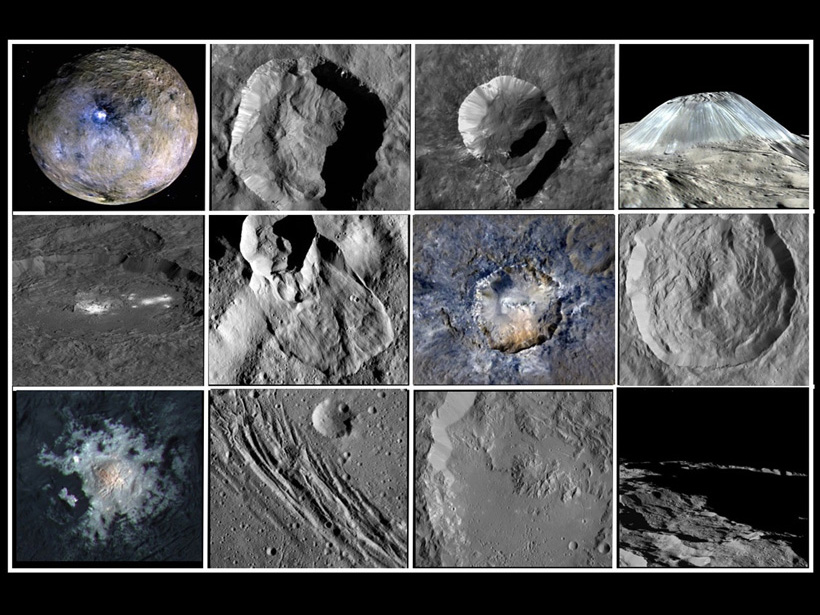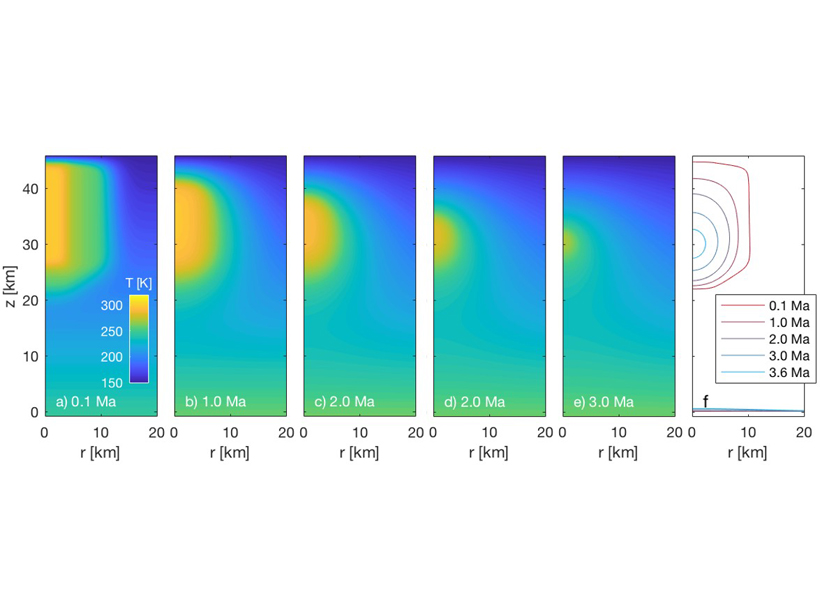Scientists have been unable to determine whether the dwarf planet’s organics were produced by its own chemical processes or delivered by asteroids. New evidence implicates asteroids.
Ceres
Ceres: Missing Craters, Crust Thickness Variation by Interior Convection
Models show that several puzzling features about Ceres’ topography, gravity anomalies, and crater size distribution may be explained by asymmetric hemispherical convection due to radiogenic heating.
Ceres: Evolution of the Asteroid Belt’s Icy Giant
A new special collection in JGR: Planets explores how ice has played a key role in the development of the landscape on the surface of Ceres.
Erupting Saltwater and the Bright Spots in Occator Crater, Ceres
Simulations show that pockets of brine that form from the addition of impact heat to the crust of Ceres could have erupted on the floor of Occator crater, explaining the presence of the bright spots.
Scientists Spot Organic Molecules on Ceres
The presence of organic material on Ceres raises new questions about its internal evolution and potential for hosting past or present life.
New Findings Suggest Dwarf Planet Ceres Is Geologically Active
Cryovolcanoes, landslides, and water ice all point to current activity, researchers found.
Objects That Slam into Ceres Remain on Its Surface
Hypervelocity impact experiments shed new light on the composition and evolution of the largest dwarf planet's little-known surface.
The Dwarf Planet That Came in from the Cold—Maybe
The presence of ammonia-rich clay on much of the surface of Ceres suggests that this dwarf planet—the largest object in the asteroid belt—may have formed far out in the solar system, then wandered in.
Dawn Spacecraft Enters into Orbit Around Dwarf Planet Ceres
A 16-month investigation of the dwarf planet Ceres could reveal a lot about the most massive body in the asteroid belt and could advance our understanding of the formation of terrestrial planets.









